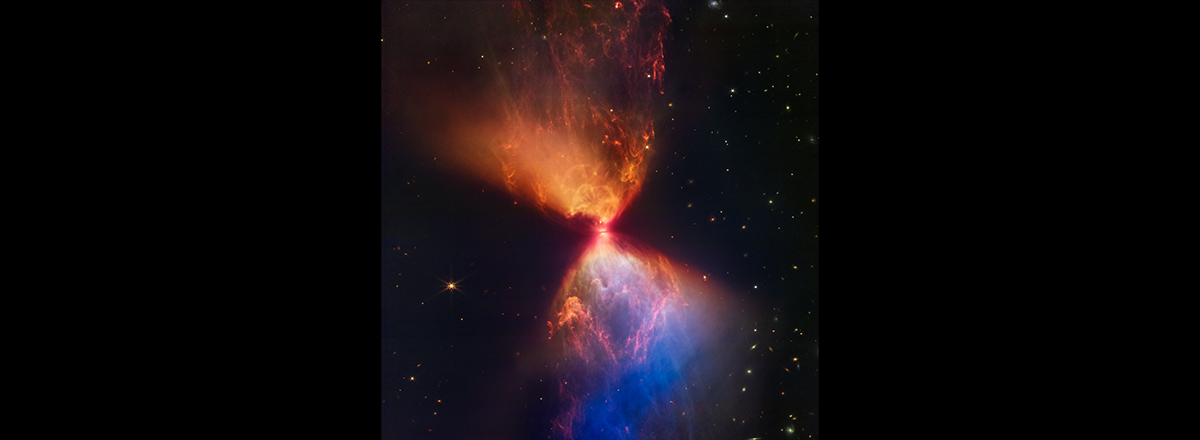James Webb's New Image Shows the Early Days of Star Formation
The protostar is now hidden in an hourglass-shaped cloud of dust and gas, and it has yet to develop the ability to generate its own energy through nuclear fusion, like the Sun and other stars.

Using its NIRCam camera, NASA's James Webb Space Telescope has taken a spectacular picture of the protostar L1527, whose emissions form an hourglass-like figure. It belongs to Class 0 and is thought to be only about 100 thousand years old. Thus, Webb captured the star in the early days of its formation. L1527 is located in the Taurus star-forming region at a distance of about 460 light-years from Earth.
The protostar is located in the center of the image, hidden behind a dense cluster of gas and dust and a protoplanetary disk, visible in the image as a dark, dense line in front of the bright center of the "hourglass." The orange and red areas of the emissions have the densest accumulation of dust, while the blue areas have the least.
Protostars are young stars in the early stages of their evolution, which can last from 100 thousand to more than 10 million years, depending on when nuclear fusion begins. In its present form, L1527 is an unstable lump of gas, between 20% and 40% the mass of our Sun, but the star is still growing, sucking in dust and gas from surrounding clouds. In doing so, the protostar slowly compresses its own core and subsequently raises its temperature to the necessary temperature for nuclear fusion.
Scientists report that scientific data from James Webb will help them better understand the processes that take place during the formation of protostars.

